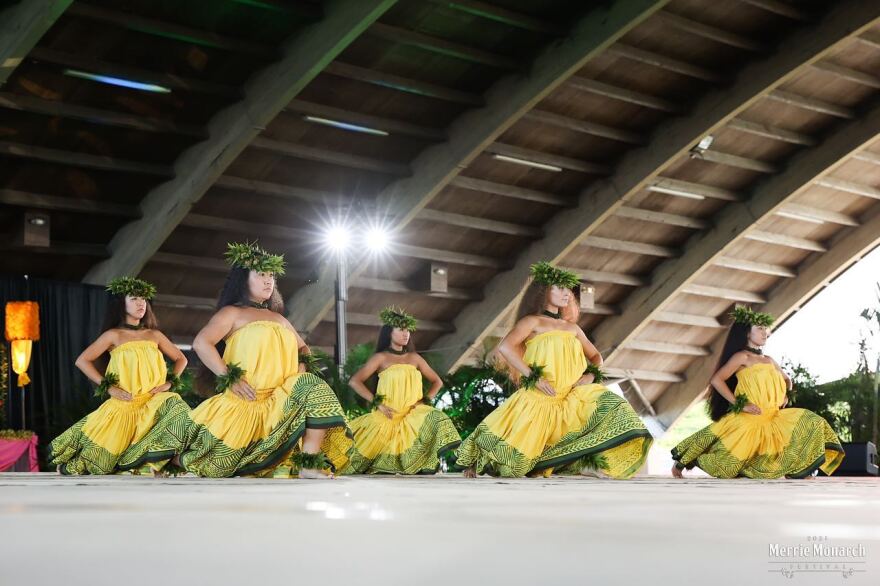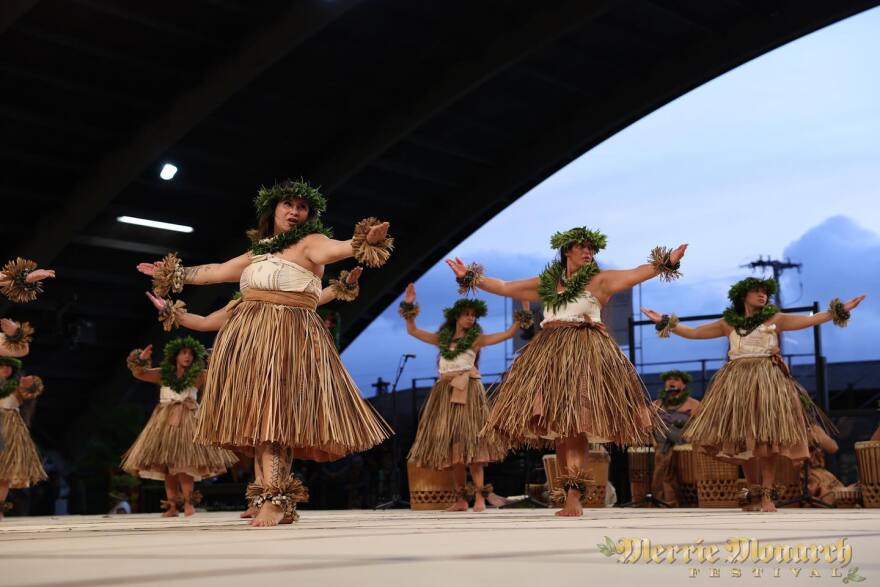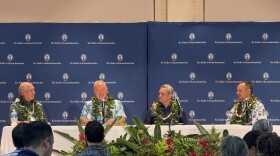Hālau hula took to the stage Friday evening for the first night of group competition at the Merrie Monarch Hula Festival in Hilo.
Every hālau has its own unique style that is passed down over the generations and honors each kumu hula’s distinct hula lineage.
Tracing one’s hula lineage is much like tracing one’s moʻokūʻauhau, or genealogy.
After years of training under a kumu hula, or hula master, a dancer may branch out and form their own hālau. They train the next generation of hula dancers who form their own hālau and so forth.

"Our hālau style was influenced at different times for different mele, you know, by all of her teachers," Kumu Hula Mehanaokalā Hind said.
Hind says her kumu, the late Leinaʻala Kalama-Heine of Hālau Nā Pualei ʻO Likolehua, always reminded her students that she came from seven different kumu.
"When we talk about hula moʻokūʻauhau, it’s not always a straight line for everybody and my kumu is an example of that," Hind told HPR.
The same could be said for Kumu Hula Keano Kaʻupu. He grew up in Keaukaha studying hula under the late Rae Fonseca and Johnny Lum Ho.
He later earned his rank of kumu hula under Mauiʻs Kumu Hōkūlani Holt and joined her son Lono in founding Hālau Hiʻiakaināmakalehua.
"Some of the things that we carry with us is not just the physical style of hula but also the mentalities, the beliefs, the traditions. For example, with Kumu Rae – very, very stringent discipline, and having a fierce passion for hula," Kaʻupu said.
"From Uncle Johnny, I just think magic. You know magic. He opened up a whole new world for me – a world where there’s still discipline but there’s a freedom to create, the freedom to explore. And with Mā Hōkū, it’s just a bunch of ‘ike and spirituality and making me see Hawaiianess," Kaʻupu said.
Many of the hālau competing at Merrie Monarch represent their own distinct hula lineage, which for some has been passed down over three or even four generations.
But there was a time in the late 60s when kumu were reluctant to graduate the next generation of kumu hula. Hind says her kumu’s kumu, the iconic Maiki Aiu Lake, chose not to bow to peer pressure.
"The pressure of 'why are you bringing back the ceremonies that haven’t been done for so long?' So she got digs in because of that. I cannot imagine being Maiki Aiu Lake during those times, making that decision because the result has been epic," Hind said.
Maiki graduated a number of kumu whose hula lineage spread far and wide throughout the islands, including Kumu Hula Mapuana de Silva of Hālau Mōhala ʻĪlima and Robert Cazimero of Hālau Nā Kamalei. The influx of hālau helped to perpetuate this centuries-old tradition.
The influence of generations of hula masters was showcased on the Merrie Monarch stage Friday night.

Kaʻupu’s hālau performed a traditional hula "Hanohano Kauaʻi," which he learned from Fonseca, and a fun modern piece composed by Lum Ho called "The Bus Coming."
"I think in some strange way everything is kind of coming full circle. I think it's an emotional year for me and I didnʻt plan it this way, so when you ask me if youʻre going to see my kumu on the stage yeah, for sure. And I hope you always see my kumu on the stage, every time that my dancers take the stage," Kaʻupu said.
The hula kahiko or traditional hula competition kicked off Friday followed by hula ʻauana or modern hula and awards Saturday.






